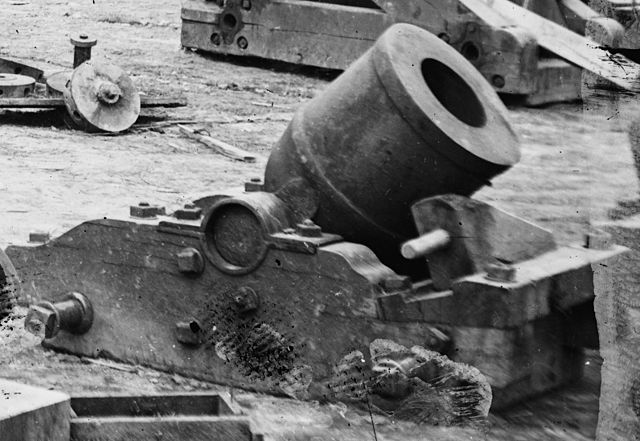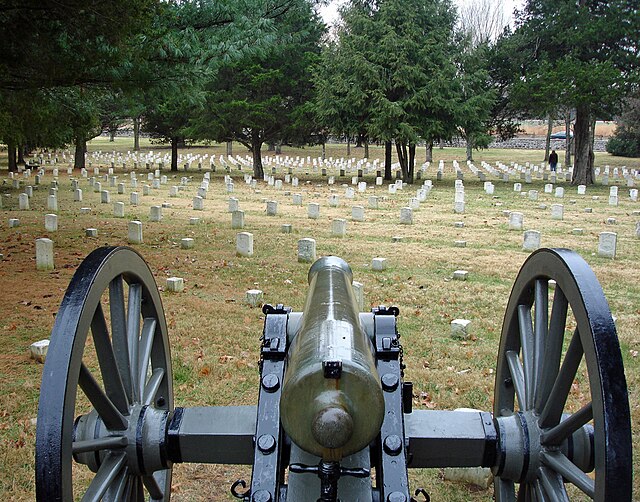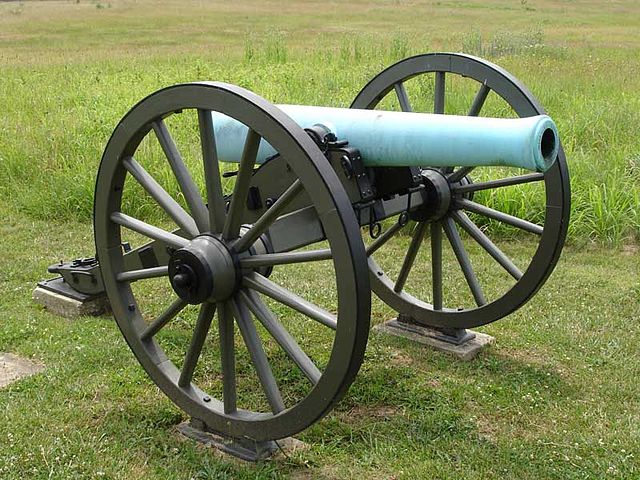Siege artillery in the American Civil War
Siege artillery is heavy artillery primarily used in military attacks on fortified positions. At the time of the American Civil War, the U.S. Army classified its artillery into three types, depending on the gun's weight and intended use. Field artillery were light pieces that often traveled with the armies. Siege and garrison artillery were heavy pieces that could be used either in attacking or defending fortified places. Seacoast artillery were the heaviest pieces and were intended to be used in permanent fortifications along the seaboard. They were primarily designed to fire on attacking warships. The distinctions are somewhat arbitrary, as field, siege and garrison, and seacoast artillery were all used in various attacks and defenses of fortifications. This article will focus on the use of heavy artillery in the attack of fortified places during the American Civil War.
Federal battery with 13-inch seacoast mortars, Model 1861, during the Siege of Yorktown, Virginia (1862).
Model 1839 siege gun in travelling position with limber.
8-inch siege mortar, Model 1841.
Federal battery with 10 inch seacoast mortars, Model 1841, on Morris Island, during the siege of campaign against Charleston harbor.
Field artillery in the American Civil War
Field artillery in the American Civil War refers to the artillery weapons, equipment, and practices used by the Artillery branch to support the infantry and cavalry forces in the field. It does not include siege artillery, use of artillery in fixed fortifications, or coastal or naval artillery. Nor does it include smaller, specialized artillery classified as small arms.
M1857 Napoleon at Stones River battlefield cemetery.
Firing demonstrations of Civil War era artillery pieces at the Springfield Armory, June 2010
M1857 12-Pounder "Napoleon"
M1857 12-Pounder "Napoleon"








